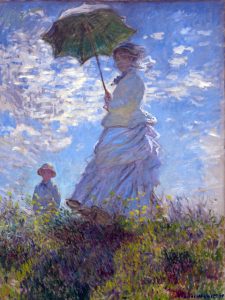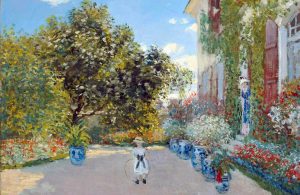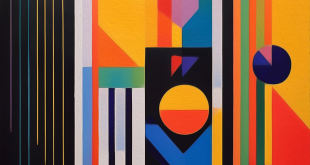 CLAUDE MONET 1/3 – One of his most famous Spring-related pieces is titled The Spring. In order to capture the changing of light and the passing of the seasons, his ambition of documenting the countryside led him to adopt a method of painting – the same scene many times. The Earth was Monet’s muse. He was more than just a founder of French Impressionist painting. He was also a lover of nature and he took great delight in painting Springtime scenes. In all his Springtime paintings are used many cool-toned colors, creating the effect of a refreshing Spring breeze.
CLAUDE MONET 1/3 – One of his most famous Spring-related pieces is titled The Spring. In order to capture the changing of light and the passing of the seasons, his ambition of documenting the countryside led him to adopt a method of painting – the same scene many times. The Earth was Monet’s muse. He was more than just a founder of French Impressionist painting. He was also a lover of nature and he took great delight in painting Springtime scenes. In all his Springtime paintings are used many cool-toned colors, creating the effect of a refreshing Spring breeze.
CLAUDE MONET 2/3 – He was practitioner of the artistic movement’s of expressing one’s perceptions before nature (especially as applied to plein-air landscape painting). He rented a house and gardens in Giverny and as the family built up the gardens. Monet’s fortunes began to change for the better, because he had increasing success in selling his paintings. He wrote instructions to his gardener with precise designs and layouts for plantings.
CLAUDE MONET 3/3 – If you want to see some of his old springs, you can get into these museums: Museum of Modern Art, New York (Agapanthus, between 1914 and 1926), Princeton University Art Museum (Water Lilies and the Japanese bridge, 1897–99), Art Institute of Chicago (Water Lilies, 1906) and Musée d’Orsay (Study of a Figure Outdoors: Woman with a Parasol, facing left, 1886).
 The intellectual property of the images that appear in this blog correspond to their authors. The sole purpose of this site, is to spread the knowledge of these painters and that other people enjoy their works. To pursue this issue, you can digit:
The intellectual property of the images that appear in this blog correspond to their authors. The sole purpose of this site, is to spread the knowledge of these painters and that other people enjoy their works. To pursue this issue, you can digit:
http://meetingbenches.com/2017/03/breathe-eyes-paint-spring/
 Meeting Benches World art in all forms
Meeting Benches World art in all forms








